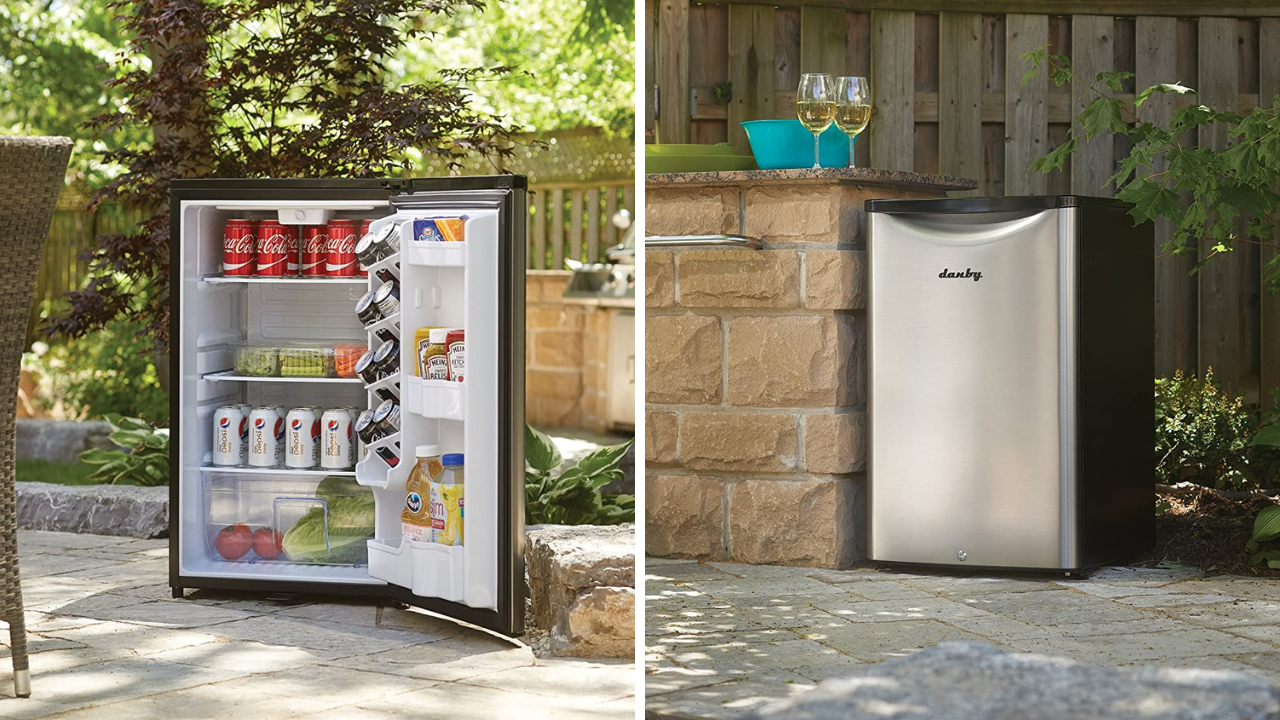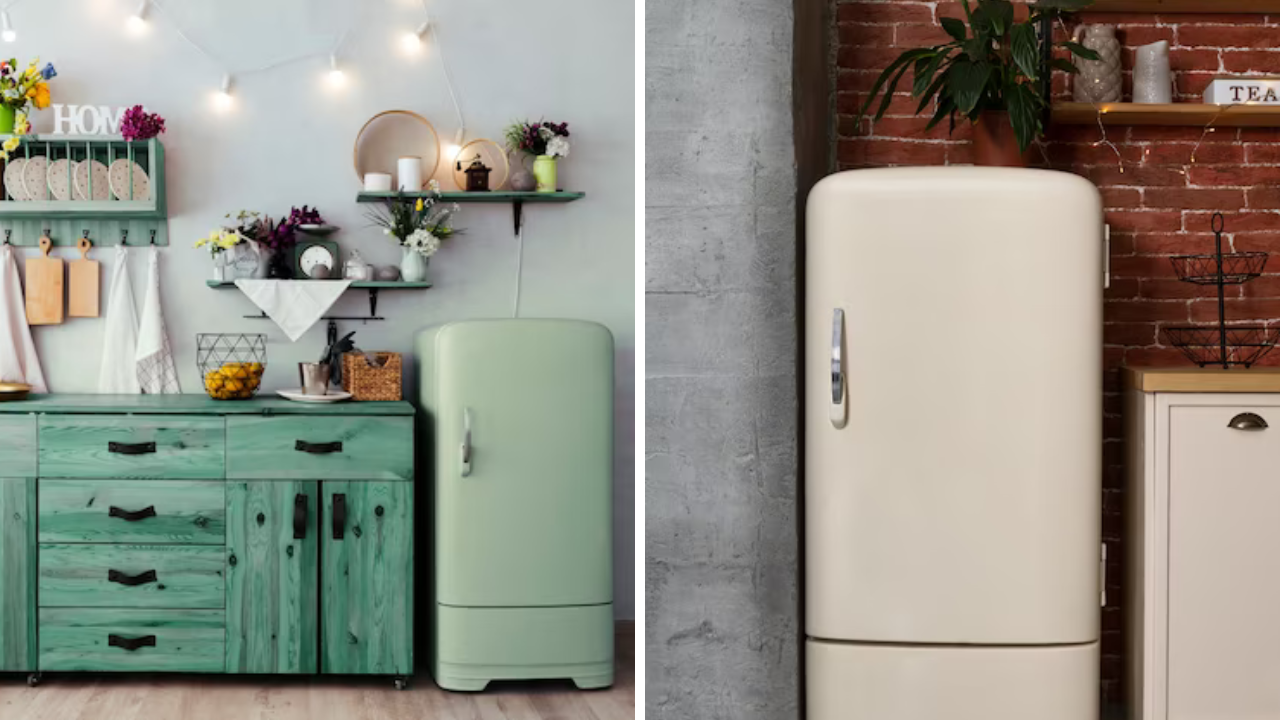Are mini fridges safe? This question may have crossed your mind as you consider purchasing one for your bedroom, dorm room, or office.
Mini fridges have become increasingly popular due to their compact size and convenience. However, it is essential to be aware of the safety aspects and potential hazards associated with these appliances.
In this blog post, we will delve into the world of mini fridges, covering everything from certifications and ventilation to potential dangers and best practices for placement.
Short Summary
- Understand mini fridge safety by considering UL certifications, proper ventilation and electrical safety measures.
- Take precautionary steps to reduce the risks of overheating, Freon leaks and fire hazards.
- Follow best practices for placement such as hard surfaces, condenser location & adequate space/ventilation. Regular maintenance is also essential.
Understanding Mini Fridge Safety
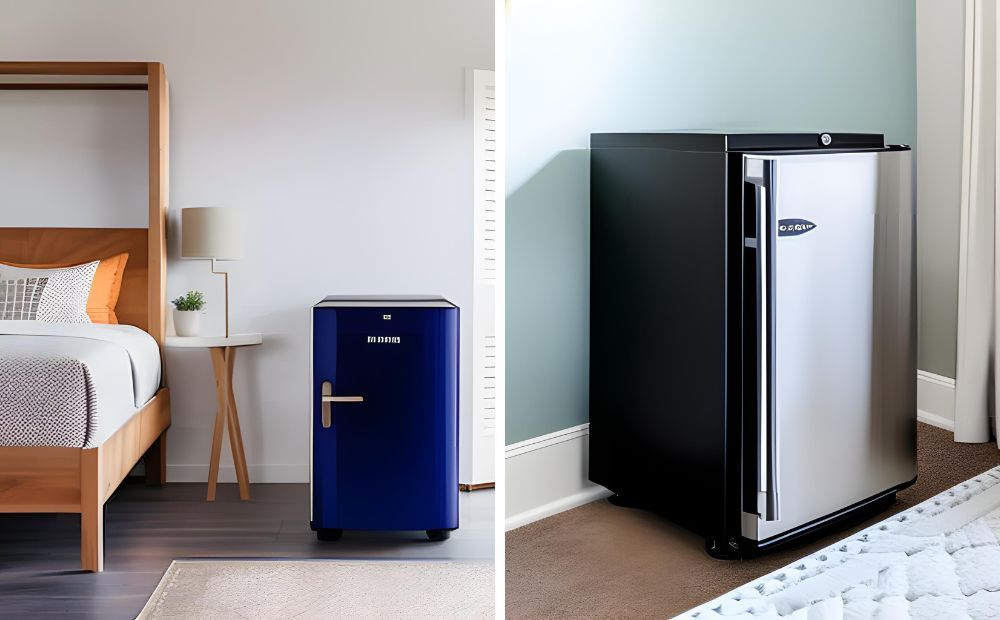
Safety should be a top priority when using any appliance, and mini fridges are no exception.
Understanding the importance of certifications, proper ventilation, and electrical safety measures will help ensure that your mini fridge operates efficiently and safely.
Let’s explore these aspects in more detail.
UL Certification and Quality Standards
UL certification, or Underwriters Laboratories certification, is a third-party certification that ensures the safety and quality of electrical products, including mini fridges.
This certification guarantees that your mini fridge adheres to established safety standards, providing peace of mind when you bring one into your living space.
Remember, safety should never be compromised, especially when it comes to appliances that operate around the clock, like a compact fridge.
Proper Ventilation
Proper ventilation is crucial for mini refrigerators, particularly those with compressors, to prevent overheating and malfunction. Overheating can be caused by factors such as overloading the fridge, exposure to direct sunlight, or insufficient ventilation.
To ensure optimal operation and avoid potential hazards, it is recommended to place your new mini fridge against a wall with a small amount of space underneath and on the sides for proper air circulation.
Additionally, avoid installing your compact refrigerator on a carpeted surface or in an area exposed to direct sunlight, as this could retain heat and cause the fridge to overheat.
Electrical Safety Measures
Electrical safety is another essential aspect of mini fridge usage. Potential hazards, such as compromised insulation on the power cord or inadequate ventilation, could result in a fire.
To ensure electrical safety, always inspect the electrical outlet for cleanliness and functionality before plugging in your mini refrigerator, and avoid using damaged outlets.
If you notice unusual or loud buzzing, crackling, or popping noises, these may indicate electrical malfunctions.
Overheating due to inadequate ventilation or other external factors can also create a fire hazard. In such cases, unplug the fridge immediately and contact a qualified appliance technician or electrician for inspection and repair.
For more information on electrical safety, you can refer to this comprehensive guide on Electrical Safety Tips and this article for Proper Appliance Maintenance.
Potential Dangers and How to Avoid Them
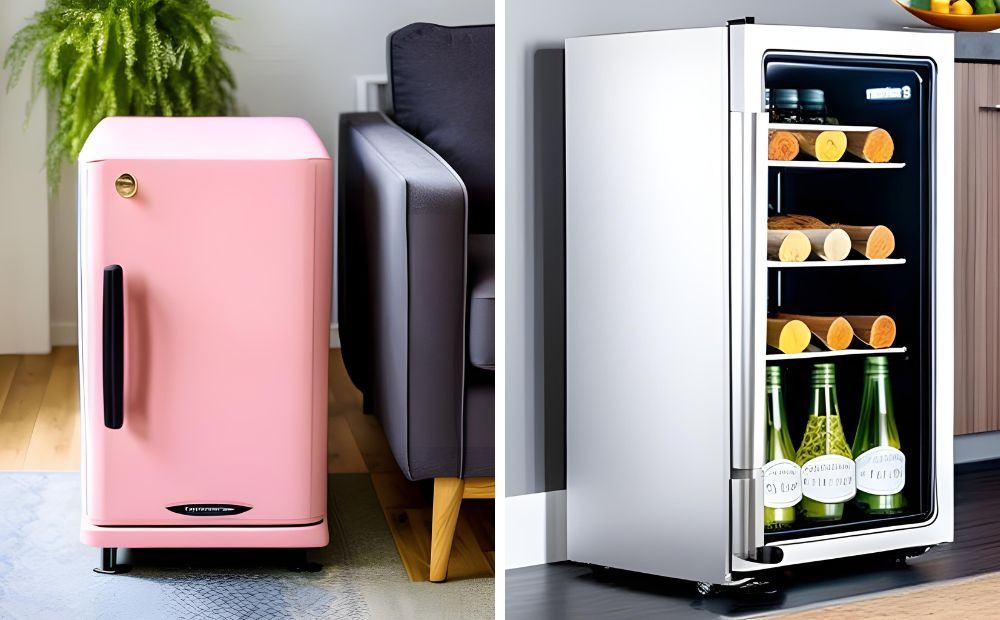
While mini fridges are generally considered safe, it is important to be aware of potential dangers and take necessary precautions to avoid them.
In this section, we will discuss the risks of overheating, freon leaks, and fire hazards associated with mini fridges, along with steps you can take to minimize these risks.
Overheating is a common issue with mini fridges, as they are not designed to be heated.
Overheating
Overheating in mini fridges can be attributed to various causes, including:
- a defective thermostat
- inadequate ventilation
- dirty condenser coils
- overloading the fridge
Overheating can lead to electrical shorting, damage to the mini refrigerator, and even the possibility of a fire.
To prevent overheating, ensure proper ventilation by leaving enough space around your mini refrigerator for air circulation.
Additionally, position your mini refrigerator away from carpets and heat sources, such as radiators or direct sunlight, to maintain a safe temperature inside the appliance.
Freon Leaks
Freon leaks, a type of refrigerator gas, are another potential hazard associated with mini fridges. Signs of a freon leak may include a chemical odor, liquid on the floor, or a motor that runs continuously.
Freon poisoning can have a range of symptoms. These include dizziness, headache, nausea, vomiting, chest pain, and difficulty breathing.
If you think there is a Freon leak, try spraying the pipework with a soapy solution. Bubbles may form if the leak is present.
If you are unsure, consider purchasing a leak detection kit to confirm the presence of a leak. In case of a confirmed leak, contact a qualified appliance technician for repair.
Fire Hazards
Certain factors, such as insufficient air circulation or a compromised power cord, could lead to fire hazards in mini fridges. It is crucial to identify these hazards and take the necessary precautions to avoid them.
To ensure safety, inspect the plug, wires, and other electrical components for signs of wear and tear. If you detect any damage, unplug the mini fridge and contact a qualified electrician for repairs.
Additionally, make sure to provide adequate ventilation for your mini fridge, as discussed in the previous sections, to minimize the risk of fire hazards.
Mini Fridges in Bedrooms: Pros and Cons
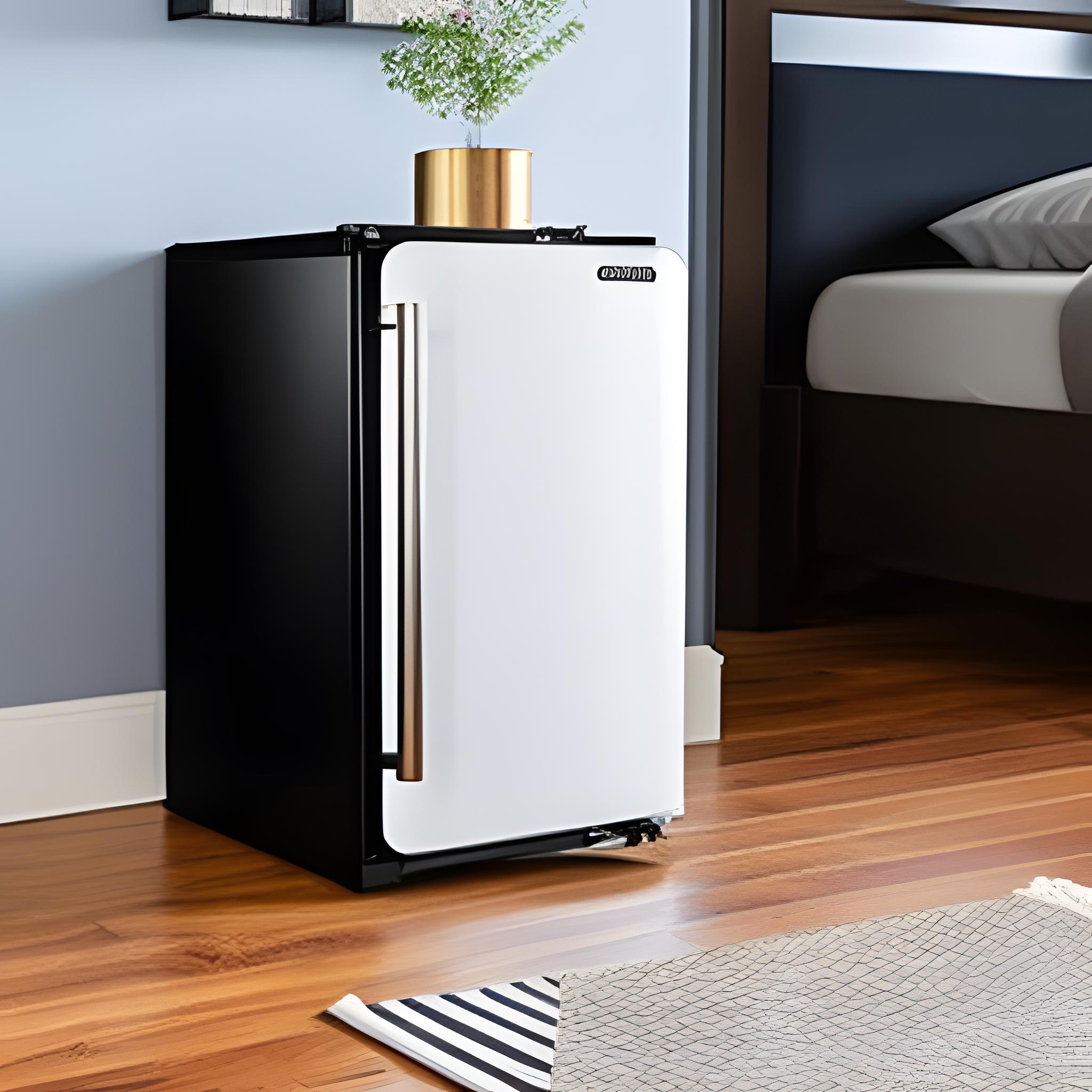
Having a mini fridge in the bedroom can offer convenience and save space, especially for college students living in dorm rooms.
However, there are also some potential drawbacks to consider, such as noise, temperature, and safety concerns. It’s important to ensure that fridges safe in bedrooms are chosen to avoid any issues.
One of the primary advantages of having a mini fridge in the bedroom is convenience. You can easily access your favorite snacks and beverages without having to venture to the kitchen.
This is especially beneficial for late-night study sessions or movie marathons. Additionally, mini fridges are ideal for small spaces, such as dorm rooms or small apartments, where a full-size refrigerator may not fit.
On the other hand, mini fridges can have some drawbacks, including:
- Noisy operation, which may be bothersome if you are sensitive to sound while sleeping
- Temperature fluctuations, especially if the mini fridge is placed too close to a heat source or not properly ventilated
- Safety concerns, such as potential fire hazards or freon leaks, should be taken into account when deciding whether to place a mini fridge in your bedroom.
Best Practices for Mini Fridge Placement
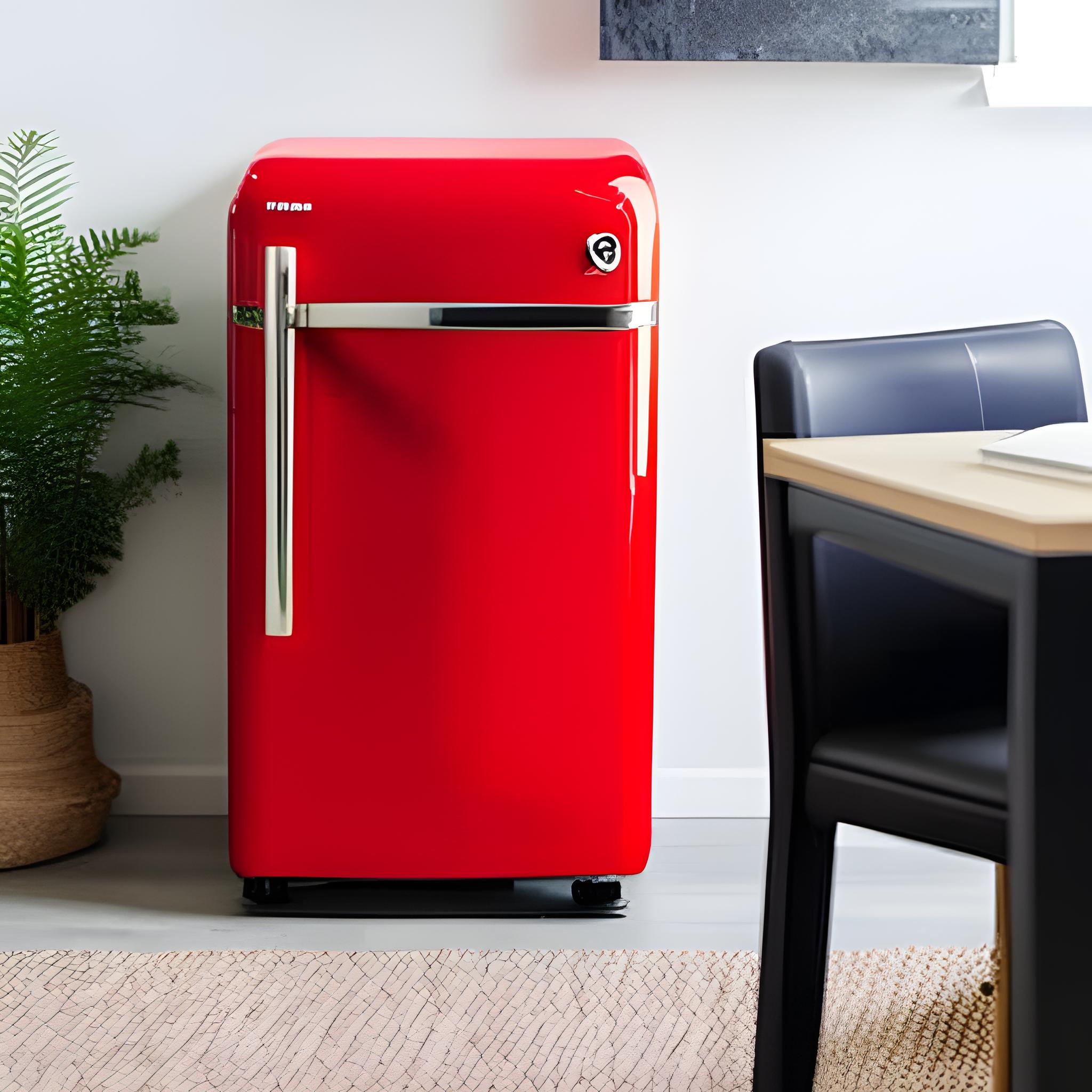
Proper placement of your mini fridge is crucial for safety and optimal performance. In this section, we will discuss best practices for placing your mini fridge, such as using hard surfaces, considering condenser location, and ensuring proper space and ventilation.
When selecting a location for your mini fridge, it is important to choose a hard surface.
Hard Surfaces and Level Ground
Placing your mini fridge on a hard surface and level ground is essential to prevent overheating and ensure stability.
Firm, hard surfaces, such as tiled, linoleum, or hardwood flooring, are the most suitable for mini fridge placement.
Avoid placing your mini fridge directly on a carpeted surface, as this can obstruct air circulation and cause the fridge to overheat, especially if the fridge door is frequently opened and closed.
When using your mini fridge outdoors, be mindful of these factors to ensure optimal performance.
Condenser Location
The location of the condenser is another important factor to consider when placing your mini fridge, especially on carpeted surfaces.
If the mini fridge has a bottom coil, it is recommended to select a different model or use a protective plastic sheet to safeguard the carpet and refrigerator from potential fire hazards.
This is particularly important if the mini fridge is placed on a carpeted surface, as the bottom is a carpeted surface.
Space Requirements and Ventilation
Ensuring adequate space around and underneath your mini fridge is crucial for proper ventilation and airflow.
It is recommended to provide a minimum of 14 to 12 inch of space between the sides of the fridge and the wall, as well as 112 inches at the back for optimal air flow around the refrigerator’s coils.
With a mini fridge inside your room or office, proper spacing is essential for efficient cooling.
This will help maintain consistent temperatures as the refrigerant absorbs heat, reducing the risk of fire hazards and Freon leaks.
Maintaining Your Mini Fridge

Regular maintenance is key to keeping your mini fridge running efficiently and safely.
In this section, we will discuss tips for maintaining your mini fridge, including cleaning, defrosting, and inspecting electrical components.
Cleaning your mini fridge is an important part of regular maintenance. Make sure to wipe down the area.
Cleaning and Defrosting
Regular cleaning and defrosting of your mini fridge are essential for optimal performance and preventing mold growth.
To clean the interior of your mini fridge, use a baking soda solution or a mixture of vinegar and water.
Clean your mini fridge at least once a month to prevent any spillages or leftover food from affecting the cleanliness of the fridge.
Defrosting your mini fridge should be done at least twice a year. To defrost, follow these steps:
- Remove all food from the fridge.
- Power off or unplug the unit.
- Leave the door open to allow the ice to melt.
- Point a fan inside the fridge to speed up the melting process.
- Place towels around the bottom of the fridge to collect melting ice and water.
Regular defrosting will help maintain the efficiency of your mini fridge and prolong its lifespan.
Inspecting Electrical Components
Inspecting the fridge’s electrical components, such as plugs and wires, is essential for preventing potential hazards in your mini fridge.
Examine the plug, wires, and other components for signs of deterioration, such as frayed wires or loose connections.
It is important to unplug the mini fridge before conducting the inspection to ensure safety.
If you detect any damage, unplug the mini fridge and contact a qualified electrician for repairs.
Regular inspection and maintenance of electrical components will help ensure the safety and efficiency of your mini fridge.
Top Mini Fridge Recommendations
When it comes to selecting the best mini fridge for your needs, there are various factors to consider, such as size, features, and design.
In this section, we will provide some top mini fridge recommendations for various needs and spaces.
The Midea mini fridge is a highly recommended option for a bedroom or college dorm room. This mini fridge offers adjustable temperature ranges and a freezer, making it a versatile and convenient choice.
Another top recommendation is the Galanz Retro Blue Mini Fridge. This stylish compact fridge is available in multiple sizes and features a mechanical thermostat control, interior light, and a premium gloss finish.
Both of these best mini fridges, as well as other used mini fridge options and mini refrigerators, are highly rated and can provide convenience and efficiency in various settings.
To explore more options and find the best mini fridge for your needs, check out the top mini fridge models available here, and reach your conclusion mini fridge-wise.
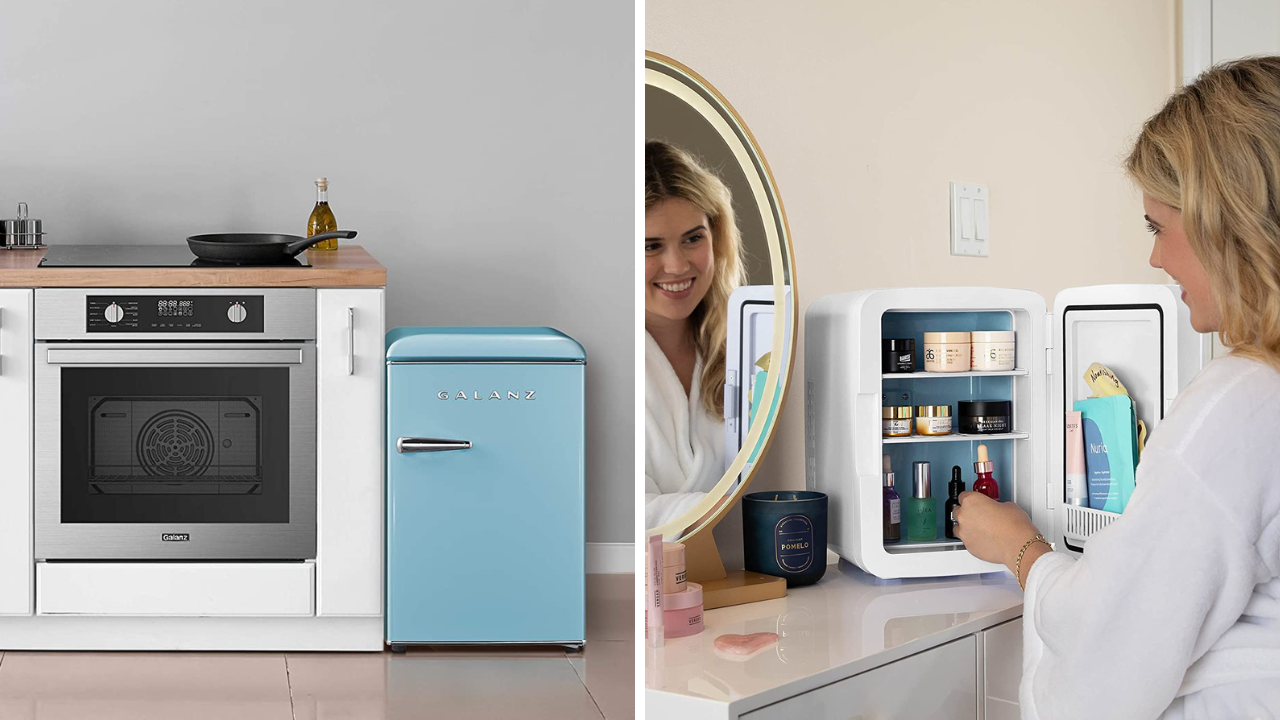
Summary
Mini fridges are generally safe when used properly and maintained regularly. By understanding the importance of certifications, proper ventilation, and electrical safety measures, you can ensure the safe and efficient operation of your mini fridge.
Be mindful of potential dangers and follow best practices for placement and maintenance to prolong the lifespan of your appliance.
With the right mini fridge and proper care, you can enjoy the convenience and efficiency it brings to your living space.
Frequently Asked Questions
Is a mini fridge safe in bedroom?
It is safe to keep your mini fridge in the bedroom as long as you are aware of the minimal radiation exposure it emits. There is no scientific evidence to suggest any serious health risks associated with keeping your mini fridge in the bedroom.
Is it safe to use mini fridge?
It is safe to use a mini fridge if it is placed away from flammable materials and there is sufficient air flow, and it is not connected to the electricity supply until all packaging has been removed. Before connecting the mini fridge to the electricity supply, make sure to remove all packaging and check that the area around the fridge is free from flammable materials and has adequate air flow.
Can you leave a mini fridge on all night?
It is generally safe to leave a mini fridge running continuously, although proper maintenance should be taken to prevent fire risk. Unplugging may be necessary when defrosting the freezer for cleaning.
How long does it take a mini fridge to get cold?
On average, it takes about 4 hours for a mini fridge to get cold. Top-freezer, French door, and side-by-side fridges typically take 2 to 24 hours to cool down.
What to put in a mini fridge?
To stock up your mini fridge, consider yogurt, cheese, fruits, veggies, pre-made meals, snacks, chocolate, ice cream, pizza, bread, dairy products and more! These items can provide you with a variety of options for breakfast, lunch, dinner, and snacks. You can also find healthier options such as low-fat yogurt, low-sugar fruits, and low-calorie snacks. Additionally, you can find items that are available for purchase.
If you're looking for a good outdoor compact fridge or a stylish retro mini fridge, we've got you covered. We've gone through the top models and put together a list of our recommended picks. These mini fridges all come with safety features, so you can be sure you're getting a quality product.
